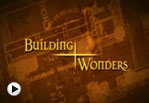Learning Activity: Investigating an Oral History
Resource:
Date of resource: Recorded in 1997
- Interviewees: Mr and Mrs Fred Tanner
- Interviewer: A.C.H. Smith
- Resource located: Bristol’s Museum Galleries and Archives and Libraries collections
Description of resource:
‘Up The Feeder, Down The Mouth’, oral history recordings. Playwright ACH Smith recorded many interviews from which to write the script of his play ‘Up The Feeder, Down The ‘Mouth’ produced at the Bristol Old Vic in September 1997 and revised and revived on the dockside at Bristol Industrial Museum in June 2001 (review).
Support materials:
- English Dictionary
- Dictionary of Brizzle
- Floating Harbour glossary
- Tanner oral history transcript
- Images of Bristol in the early 20th century
- Contemporary and Historical Ordnance Survey (OS) maps (Alan Godfrey Maps produce large scale plans of OS maps for towns throughout the UK and Ireland)
Techniques and questions for investigating this oral history
- Discuss what is meant by oral history. Consider why oral histories are collected and why they are important.
- Discuss what information can be gained from listening to oral histories e.g. accent, dialect, gender, emotions, information about a person’s life and experiences.
- Discuss what can’t be discovered from listening to oral histories (unless it is discussed as part of the interview) e.g. physical appearance, age, expressions and gestures.
- Explore the places mentioned in the Tanner’s oral history and locate them on a map to build up a picture of their life. Find out more about the areas they lived in and visited.
- Find out more about the different kinds of jobs that Mr Tanner mentions in his recollections of the harbour. Research the Images section of this resource for more information.
- Carry out further research to build up a picture of the Tanner’s life at the beginning of the 20th century. Use images, books, film, census returns and additional oral histories.
- Discuss the reliability of oral histories as a historical source based on the work you have done. What does this can tell us about the importance of using more than one source of evidence?






